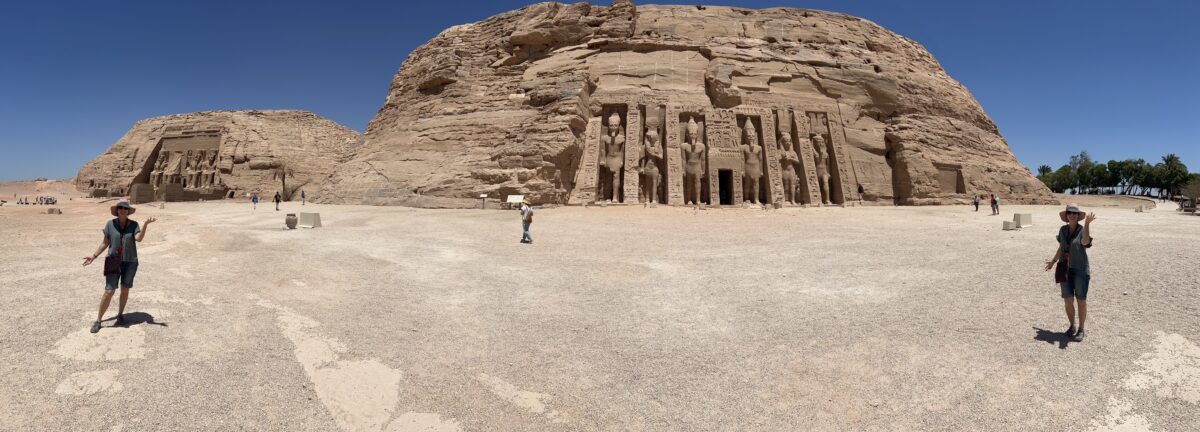
See Part 1 where we discuss our decision-making funnel which lead to trip and how we initially made our way to Jordan, and ultimately Petra, here. (link)
See Part 2 where we meet our tour group and visit the Dead Sea, Jaresh, and Mt. Nebo here. (link)
See Part 3 where we pretend we’re Indiana Jones and visit Petra here. (link)
See Part 4 where follow the ghost of TE Lawrence through Wadi Rum and fly from Jordan over the Red Sea to Egypt, and experience the splendor of the Old Cataract Hotel where Agatha Christie and Winston Churchill (among others) stayed. (link)
First, it’s hard to not fill a trip report like this with superlatives like “amazing” and “incredible.” Daily you’re feasting on something you’ve never witnessed and which you’ll probably never experience again. The gravity of place, of “being here” hits you hard…and that happened again and again …and again on this Egyptian leg of the tour. After our first night at the beautiful Old Cataract hotel we boarded the bus for the airport and a short flight to Abu Simbel, where King Ramses II’s tomb awaited.
King Ramses II and Nefertari
First, let’s cover the history. Ramses was a badass, but much today’s leaders, he was great at marketing, and spent a lot of time reminding everyone just how cool he was. The equivalent in his day of bragging about yourself on social media was carving your victories on just about EVERYTHING. Early in the tour we learned that even though Ramses won his share of battles, in truth some of them were more nail-biter’ey than he’d let on with his subjects. In their eyes, he needed to be all-powerful and infallible. So, everything we saw reflected that cockiness.


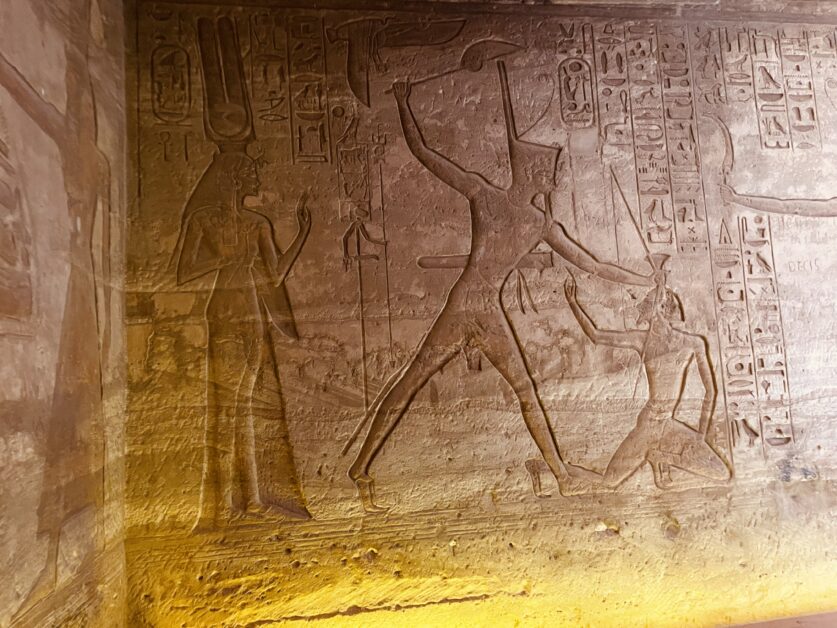
I mentioned that nothing prepares you for that first view of the Treasury in Petra. Nothing also would prepare you for your first look at the Ramses II Great Temple. It stands 98 feet high, with four gigantic, seated colossi flanking the entrance. It’s intimidating, even all of these years later.
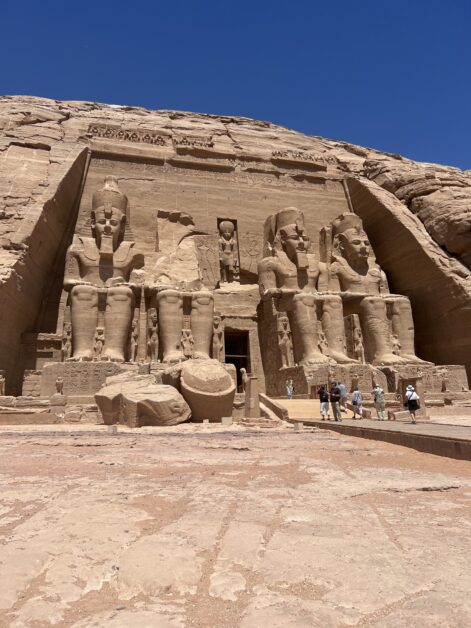


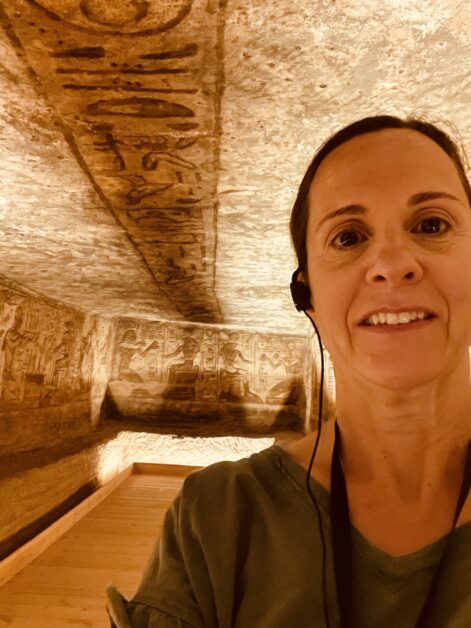
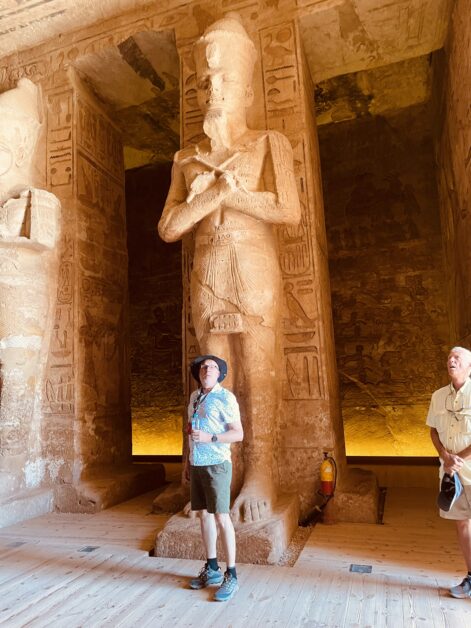
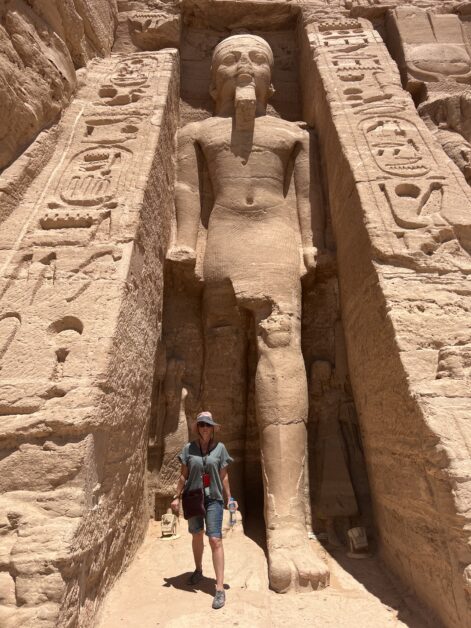
Next to Ramses II’s Great Temple stands a smaller one for his wife, Queen Nefertari.
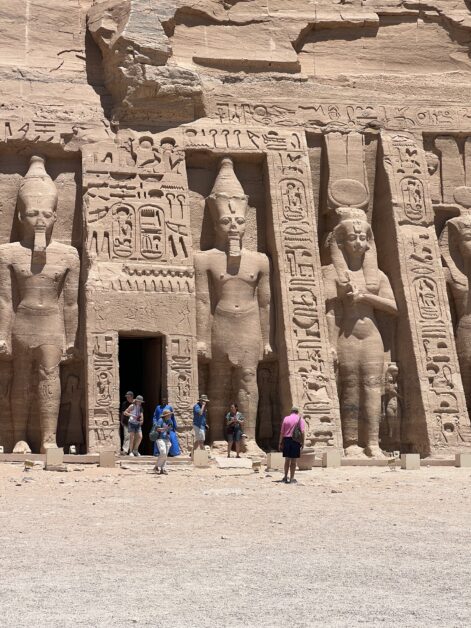
Below the smaller statue of a prince of Egypt.

Best Practice: Want to experience the temples when they’re nearly empty? Debra, our guide, shared that the key is to go early in the day. When you take the trip, enter both temples and feel how this power couple operated. You can see their might in the statues and hieroglyphics.
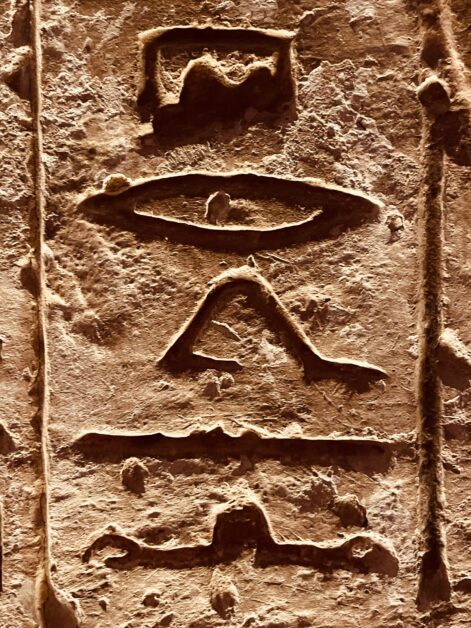


Fast forward to modern times. If you’re a fan of engineering, you’ll be amazed that these temples were actually MOVED to this location! When Egypt built a hydroelectric dam the temples were in the way. So, to preserve history, they figured out an ingenious plan to save them, which is detailed just inside of the entrance/exits. Don’t miss that display.

Here’s what sucked about our visit to the Ramses II tomb. The Egyptian government makes visitors walk a death march through a zigzag maze of vendor stalls back to the bus. You think every ride at a theme park ends in a gift shop? It felt like every antiquity site in Egypt was the same. While the vendors in Jordan were persistent and sometimes annoying, the ones in Egypt were BRUTAL. After we purchased one wall hanging, the salesman followed us all the way to our bus, even trying to board! That’s when for the first time I understood why we had security on our bus. A friend of ours literally ran to the bus and the vendor was running as well, chasing her! It was absolutely horrible. If there’s a reason to skip Egypt, this would be it. I wouldn’t skip, but just be warned that you’re going to have to say no, impolitely sometimes, a TON.
The following day we visited our first Christian site, Saint Simeon Monastery on the edge of Aswan in the desert. Most notable here were the current residents of the place: bats in the ruins of each room, which would scatter as you walked through. They’d flutter ahead of you, and when you reached the far side of a room, you’d turn to see bats flying where you’d stood only a moment before. It seems creepy, but was actually pretty cool, and far better than the annoying vendors the day prior. We also took a boat cruise out to a Roman temple in the middle of the Nile river, which was our first look at the splendor to come as we floated north.
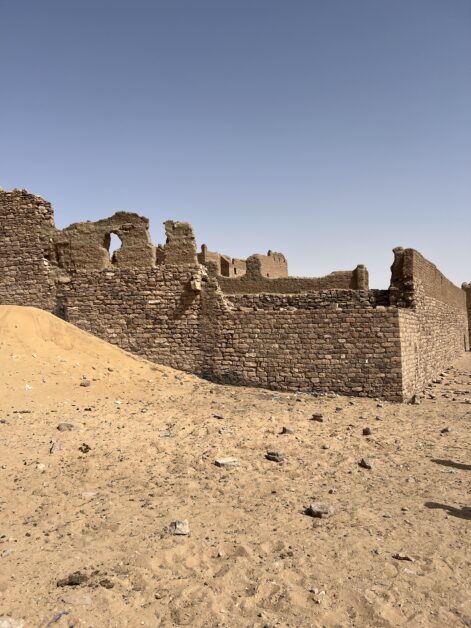

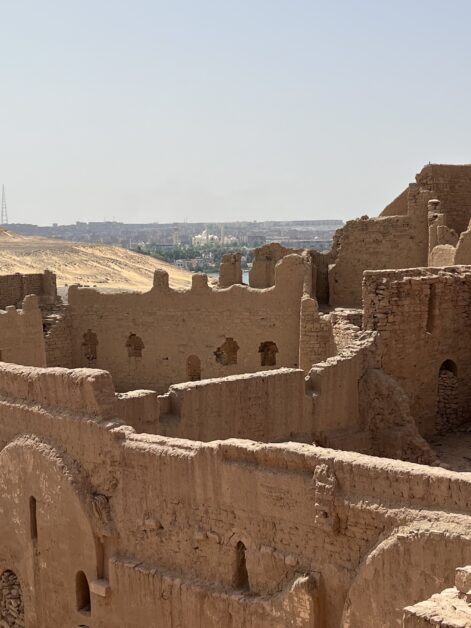
About Our Cruise Ship: A Primer
If you’ve never been on a river cruise, let me share how the boat works. First, all boats aren’t created equal. As we’ll share in our European Christmas Markets review, our European craft had MUCH smaller staterooms than our Nile ship. If stateroom size is important to you, you’ll spend considerably more money. The extra room was nice in Egypt, but we both agree: for us, we don’t need it. The lounge area on both boats was huge, open nearly all hours, and most often quiet. Our Tauck boat featured a pool on the roof, which we used when the weather turned painfully hot. Service on the boat was also impeccable. Our room was cleaned daily and the servers were happy to deliver whatever beverages you desired between meals.

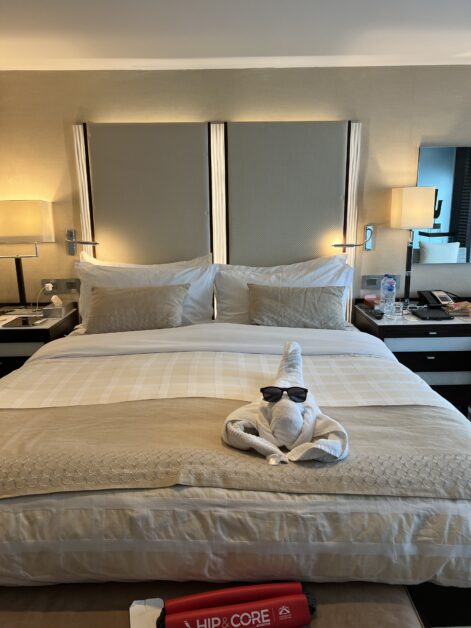
Leaving the ship for any reason and worried they’ll leave without you? Good news: there’s a system in place so they don’t. Ours involved a pass. While each ship is different, the effect is the same: freely explore each port, as long as you remember to take (and keep!) your pass on and off the vessel.
Meals were served community-style, allowing us to sit with different people, getting to know our fellow travelers. Want to be alone? There was plenty of room for you to bring a book and sit quietly by yourself. The staff was also happy to prepare food to take back to your room if you weren’t feeling well, as was the case of one of our friends. All in all, the ship was amazing, and a nice retreat to return to each day after sightseeing.
Speaking of ships, now the ship will move, because in part six we make our way toward Thebes!




Leave a Reply